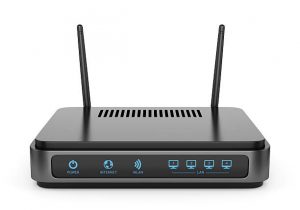People are getting vaccinated across the country, and there is finally some general positivity about the end of the pandemic on the not-too-distant horizon. But this whole working-from-home thing isn’t about to go away anytime soon. In fact, if the past year has proven anything, it’s that many businesses can still thrive in the home office – at least on a part-time basis.
This space has previously dedicated content to the notion of cybersecurity and protecting information in the digital world of medical practice, but online security in a work-from-home environment actually starts with some more basic concepts that don’t get talked about nearly as often but can cause significant risk to your security.
This three-part series offers a look at some of the simple but overlooked elements, starting with a handful of tips to ensure your home workspace is as secure as your office. We’ll skip the basics like choosing passwords wisely, using an anti-virus software and avoiding links and attachments in your email or on your browser, but these next-stage tips are crucial, too: our home router set up for security?
Your home networking device often comes with its own password from the provider. It’s an elaborate mix of letters and numbers, but you should always update this to something new – and change it periodically knowing that a number of WiFi devices are likely to connect to it over time (even if only friends and family are ever granted access). Set reminders on your smart phone to change passwords, or use the same system of switching back and forth to daylight savings time that you use to remind you to change the batteries in your smoke detectors.
You should also update your router firmware, which is key to keeping your wireless connection safe from outside threats. An added bonus to the simple process is the potential boost to improving your device’s signal.
Use your office VPN
Depending on the network setup at your physician practice, you may have access to a Virtual Private Network at home. If it’s an option for when your doing work remotely, it’s highly recommended as a secure environment for your connections.
Speaking of connections, stick to SSL
If you visit a site that doesn’t have a security certificate, you’re at risk. Or at least there is a risk of being at risk. And it’s not worth the risk, so avoid any site that doesn’t have a valid SSL connection. For the record, SSL stands for Secure Sockets Layer, which basically protects the data being sent between two systems from others who may try to read or change that information.
Multi-factor authentication is a must
Your smartphone uses it, and so should your home and work system. Compromised credentials lead to security breaches, but adding the MFA is like a security chain on your door over the deadbolt – another layer of security that’s easily enabled but would take some effort in a break-in attempt. You can learn more about how to add this to your internet life here.
These tips are important, and while you may already be on top of them all, the refresher is always a good idea. Next up is a look at the world of online scams and what you should be aware of in the new pandemic work world.
Watch for the next two parts:
Part 2: New technology means new scams to watch for
Part 3: Elderly patients targets of medical scams
2Ascribe Inc. is a medical transcription services agency located in Toronto, Ontario Canada, providing medical transcription services to physicians, clinics, and other healthcare providers across Canada. Our medical transcriptionists take pride in the quality of your transcribed documents. WEBscribe is our client interface portal for document management. 2Ascribe continues to implement and develop technology to assist and improve the transcription process for physicians and other healthcare providers, and recently introduced AUTOfax. AUTOfax works within WEBscribe to automatically send faxes to referring physicians when a document is signed off by the healthcare professional. As a service to our clients and the healthcare industry, 2Ascribe offers articles of interest to physicians and other healthcare professionals, medical transcriptionists, and office staff, as well as of general interest. Additional articles may be found at http://www.2ascribe.com.



